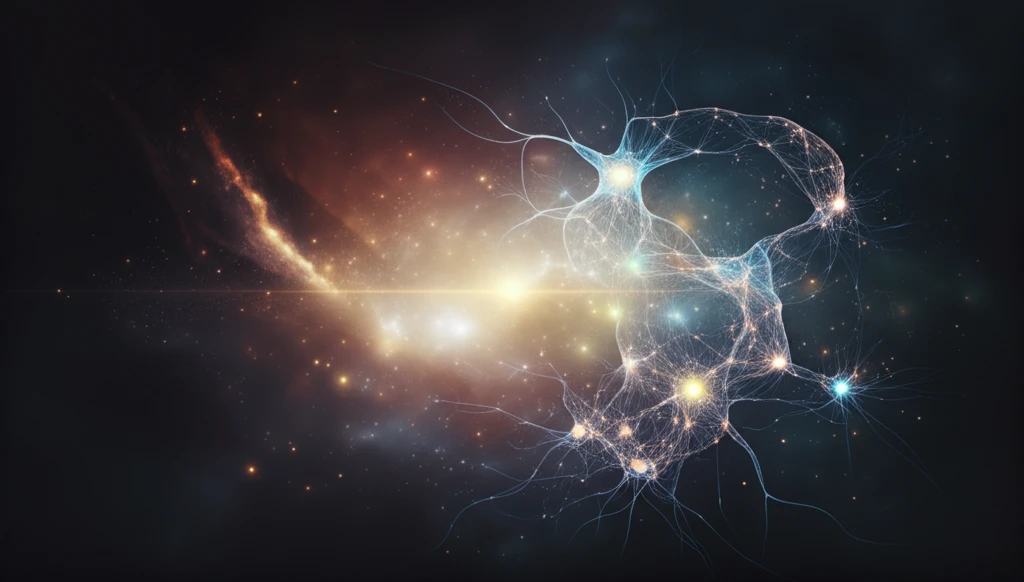
Decoding the Cosmos: How AI is Revolutionizing Dark Matter Research
"A deep dive into how convolutional neural networks are accelerating the search for dark matter haloes, making cosmic simulations faster and more accurate."
The quest to understand the large-scale structure of the universe has always been a computationally intensive endeavor. Scientists rely on simulations, particularly N-body simulations of collisionless cold dark matter (CDM) particles, to model how overdense regions collapse under gravity, forming structures known as dark matter haloes. These haloes are the gravitational cradles where galaxies, galaxy groups, and clusters are born. The accuracy and scale of these simulations are crucial for interpreting observations from galaxy surveys and constraining cosmological models.
Modern techniques in large-scale structure surveys, such as the Sunaeyev-Zeldovich effect, weak lensing, and intensity mapping, promise groundbreaking insights into fundamental physics, including gravity, dark energy, neutrino masses, and the physics of inflation. However, these techniques come with complex systematics that must be thoroughly understood to avoid obscuring the sought-after signals. This is where mock simulations come into play, serving as vital testing grounds for data analysis pipelines.
Traditionally, generating these mock simulations required computationally expensive full N-body simulations. But now, a new approach is emerging: leveraging the power of artificial intelligence, specifically deep Convolutional Neural Networks (CNNs), to simulate dark matter halo catalogues directly from cosmological initial conditions. This innovative method promises to drastically reduce computational costs while maintaining a high degree of accuracy.
The Power of CNNs in Dark Matter Simulation

Researchers have successfully trained a three-dimensional deep CNN to identify dark matter protohaloes directly from cosmological initial conditions. By training the CNN on halo catalogues from the Peak Patch semi-analytic code, the researchers achieved a Dice coefficient of approximately 92% in just 24 hours of training. This remarkable efficiency opens new possibilities for generating the large suites of mock simulations needed for modern large-scale structure surveys.
- Computational Speed: CNNs significantly reduce the time required to generate mock universes.
- Reduced Memory Requirement: CNNs only consider pixels within the range of their largest filter, allowing for the density field to be subdivided into separate volumes.
- Eliminating Long-Range Forces: This subdivision eliminates the need to compute costly long-range gravitational forces, simplifying the process.
The Future of AI in Cosmology
This work represents a significant step forward in leveraging AI for cosmological research. By demonstrating the ability of CNNs to generate accurate mock dark matter halo catalogues at a fraction of the computational cost of traditional methods, this research paves the way for more extensive testing of data analysis pipelines and a deeper understanding of the universe's large-scale structure. As AI technology continues to evolve, we can expect even more innovative applications in cosmology, enabling us to unravel the mysteries of dark matter and the cosmos with unprecedented speed and precision.
